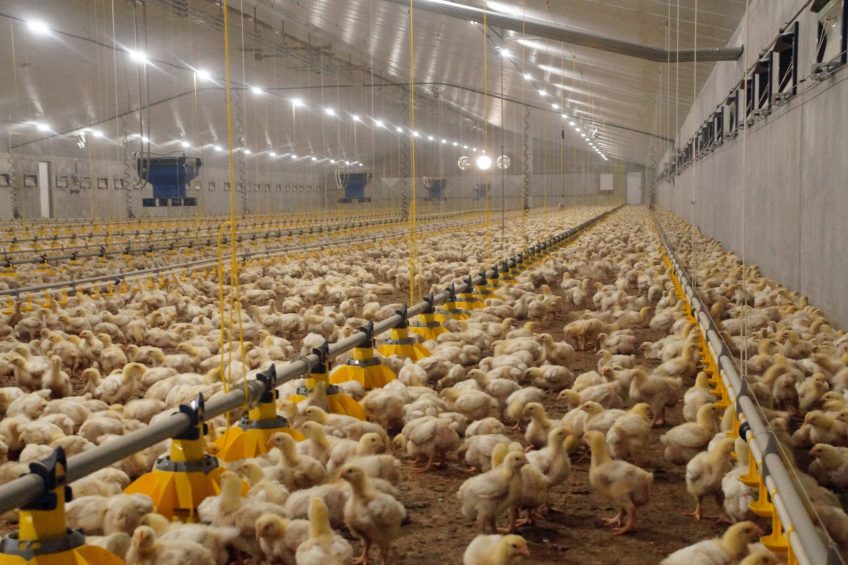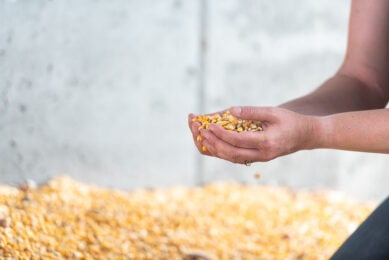Gut health and immunity key in antibiotic-free production

It seems that not a moment passes in which we do not hear about antibiotic resistance and the need to reduce antibiotic use in animal production systems. Maintaining gut health and its functions are the main objective in successful poultry production, as a healthy gut usually means a healthy bird.
Antibiotics have historically been, and are still extensively, used to minimise the impact of enteric disease, and a major challenge is to find alternatives to antibiotics to maintain gut health. Genetic advancements in modern broiler production yielding increased average daily gain, with lower feed intakes and increased meat yield, places ever-increasing pressure on the gastrointestinal tract to function optimally. The intimate relationship and the balance in the gastrointestinal tract between gut flora, the host and environment are key to maintaining a healthy gut.
Healthy gut
A healthy gut involves multiple physiological and functional components, including digestion and absorption of nutrients, host metabolism, energy production, a balanced gut microbiota, mucus layer, barrier function and the mucosal immunity. A healthy gut is not only a gut without disease.
A healthy gut is an effective digestive organ that can mount a good protection against disease and cope with changes. Production stressors can result in an inflammatory response directed at containing any disease. We know that the gut microflora is involved in mediating the host inflammatory response, and such a response can be costly in terms of feed efficiency and growth performance. Therefore, to enhance feed conversion efficiency under current market constraints, the emphasis must shift from maximising host gastrointestinal disease resistance to managing gut ecology that will optimise host resilience.
It is widely accepted that only a healthy gut can digest and absorb the maximal amount of nutrients to obtain the most out of the diet. If the gastrointestinal tract is compromised, its requirements for energy and protein increase, which in turn can reduce the nutrients available for growth and impede average daily gains. This results in reduced feed efficiency, and any challenge can also result in reduced feed intake levels at a time when feed intakes are already somewhat low through genetic selection.
Maintaining gut health without antibiotics
An effective gut health programme must focus on optimising gut absorptive membrane development and integrity. The early establishment and maintenance of a beneficial intestinal flora is the key, since the gut flora competes with pathogens such as Clostridium spp. Furthermore, a favourable flora also helps to stimulate early enterocyte development.
The aim of any gut health programme is to protect flock health by establishing and maintaining a stable normal flora immediately after hatching. This requires several possible interventions:
• Seed the gut with a host-adapted favourable flora. This will prevent the establishment of pathogens. Success would be dependent on the degree of challenge.
• Prepare a favourable gastrointestinal environment to help the rapid establishment of the favourable flora. This will also assist enterocyte development to accelerate gut maturation to aid digestion efficiency and absorption capacity.
• Exclude pathogens to maintain the stability of the gut flora. Gut flora management aimed at ensuring competitive exclusion can prevent the pathogens from establishing and prevent any negative impact of mycotoxicosis on the gut flora.
• Improve digestion and absorption by reducing substrate accumulation in the lower gastrointestinal tract, thus avoiding the negative impact on the gut flora profile. This will help to improve the membrane integrity and therefore improve absorption.
Based on the above multiple intervention strategies, a unique gut health programme has been developed by Dr. S.R. Collett at the University of Georgia in the US. His approach has been shown to achieve improved growth rates and feed conversions by ensuring good gut health. The programme advocated by Collett comprises the sequence of “seeding” the gut with beneficial intestinal organisms; “feeding” these intestinal floras by creating a positive gut environment to allow their proliferation; and, finally, “weeding” for the selective exclusion of potentially deleterious flora using prebiotics that inhibit pathogens.
Favourable intestinal flora
Seeding the gut with favourable flora begins with the parent stock. Since normal eggs have a sterile surface prior to oviposition, the point of lay is the first opportunity for contamination. The level of contamination varies from 103-105 colony-forming unit (cfu) per egg under clean conditions to 107-108 cfu per egg under dirty conditions, therefore confirming that contamination is a function of the environment into which the egg is laid (Board and Fuller, 1994). These eggshell contaminants provide the first seed stock for the chick and its gut colonisation at hatch. Positive manipulation of parent stock flora provides the first opportunity for seeding beneficial flora in the gut of the subsequent broiler chick. Fernandez et al. (2001) reported that feeding the parent stock mannan-rich fraction (MRF) (Actigen, Alltech) positively altered the normal flora.
The need for appropriate environmental management of houses, especially of ventilation, which influences litter quality, is the key for overall success.
Apply direct-fed microbials at day-old in the hatchery to establish favourable flora, prior to the chicks being housed. Hofacre et al. (2003) reported that using a direct-fed microbial (All-Lac, Alltech) resulted in improved conditions due to colonisation of the gut with favourable microbials, and he went on to suggest the direct-fed microbials may be strain-specific, since Lactobacillus acidophilus and Streptococcus faecium were the primary organism used.
Appropriate environmental management of houses is crucial with any nutritional programme. Ventilation will influence litter conditions especially and in turn will intensify any coccidiosis challenge as well as shift the balance in favour of pathogenic populations, impacting overall gut health of the bird. Controlling relative humidity, particularly during the brooding period (when ventilation needs are low), is essential to prevent proliferation of Clostridium, coccidia and other pathogenic organisms.
“Feeding” for favourable environment
This refers to using preparations consisting of organic acidifiers that reduce pH levels and promote beneficial bacteria at the expense of pathogenic organisms. With a beneficial microfloral community and an intestinal ecology established, the resultant healthy villi allows maximum capacity absorption and minimises the presence of pathogenic bacteria within the gastrointestinal tract. Figure 1 shows an overall improvement in broiler performance due to acidification of drinking water.
Figure 1 – Effect of water acidification.

“Weeding” for selective exclusion
In order for most bacteria to colonise the gastrointestinal tract, they first need to attach to the epithelial surface. They do this via carbohydrate projections such as lectins that recognise certain epithelial surface sugars. Many enteric pathogens attach to these sugars via Type 1 fimbriae, which recognise mannose. Mannose-rich fraction (MRF; Actigen), a second-generation concentrated mannan oligosaccharide (MOS) is therefore able to maintain a stable gut flora.
Actigen, the only known concentrated, mannose-rich oligosaccharide fraction in the market, was evaluated for its effect on ileal villi morphology as an indicator of enteric health in turkeys by Barasch et al. (2011). Their findings indicated a greater villous surface area (Figure 2), indicating a healthy intestinal surface allowing an improved absorption of nutrients and subsequent improved overall performance.
Figure 2 – Villous surface area.

A study conducted by Lea et al. in 2011 investigated the impact of the dietary inclusion of MRF in broilers on gut histology and reported the following (see Table 1): Villi were significantly taller and thinner in birds fed diets containing 400 mg/kg of MRF compared to other diets, crypt depth was significantly decreased in birds fed the diet containing 200 mg/kg of MRF but not by any other treatment and villus to crypt ratio was significantly increased by inclusion of both 200 and 400 mg/kg MRF compared to control.
The improvement in absorptive capacity of the gut is reflected by the significantly increased body weight gains observed in diets supplemented with MRF compared to control, but no effects of supplementation on feed conversion ratio (FCR) were observed. This study indicates that there may be a positive dose-dependent response to MRF when looking at the villus to crypt ratio, with the decrease at the higher inclusion being caused by over-supplementation.
Continuous process
In conclusion, the “Seed, Feed, Weed” concept is a continuous process throughout the life of the bird and an integral component in the Alltech Antibiotic Reduction programme. The complete programme provides nutritional solutions for poultry health but also provides coaching, support and motivation to producers to achieve their targets. This multiple-strategy approach is likely to be more effective than any single solution often advocated at the farm level in order to reduce antibiotics from production systems, and it complements governmental programmes.
*All-Lac is not available within the European Union
 Beheer
Beheer








 WP Admin
WP Admin  Bewerk bericht
Bewerk bericht